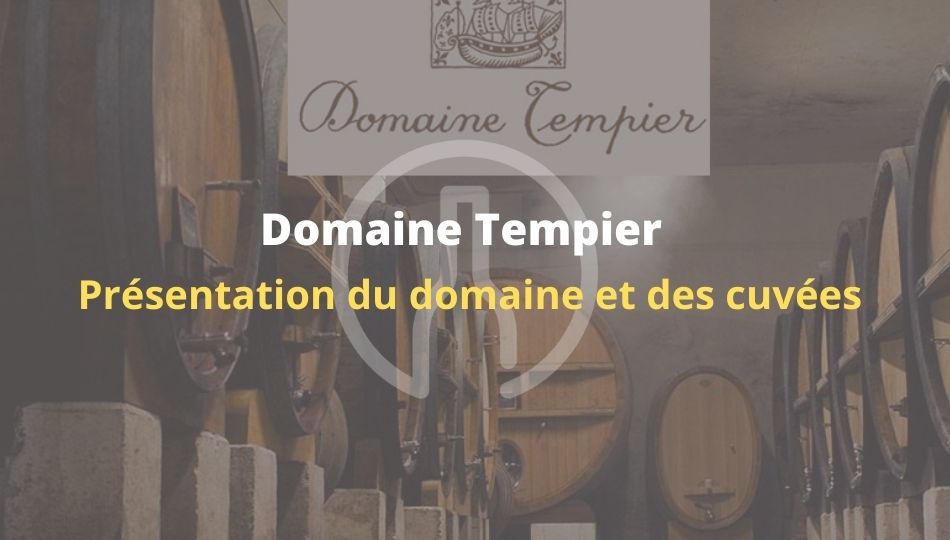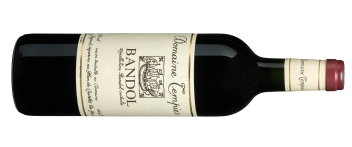Today, we're going to introduce you to one of our partner estates: Tempier Estate.
History of the domain :
This estate has existed since the reign of Louis XIV. The country house was built in 1834 and was awarded its first gold medal in 1885. Once the severe phylloxera crisis had passed, Léonie Templier had the vines replanted on a "porte-grange".graft. Later, the cellar was built and cement doors were installed. A crisis occurred in the early 1910s, prompting the uprooting of part of the estate's vineyards, which were replaced by orchards. Then came another economic crisis in 1929, leading to a period of neglect for the estate.
In 1940 Lucie Tempier whose father owned a leather and skins business in Marseille, married Lucien Peyraud. Lucien Peyraud is the descendant of a family of gunsmiths and silk manufacturers from St Etienne. His goal was to become a winemaker. In 1940, the newlyweds moved to the estate, and from there began a great story. In 1943, the estate was planted with noble grape varieties such as Mourvèdrethe Cinsault and Grenache, grown at an intense pace. Rosé was bottled in 1943. Working conditions are quite difficult: candle lighting, water pumping wellploughing. In 1945, Lucie Peyraud takes the helm of the syndicat des vins de Bandol constituted in 1941, and became a member of the Institut National des Appellations d'Origine in 1947. With his phrase "plant from Mourvèdre " he is preparing a campaign among winemakers to award the Vin de Bandol its uniqueness and greatness. The first vintage of Bandol Rouge made its debut at the estate in 1951 with a label designed by Alphonse Tempier Lucie Peyraud's father. This vintage symbolizes the departure of the wines via the port of Bandol on royal tartans. It hasn't changed much since then, and represents the spirit of the estate.
Between the 1950s and 1970s, starting with a strong grape variety, the MourvèdreLucien Peyraud to promote the Bandol and make it a great wine for ageing on a par with Bordeaux, Burgundy and Côte-Rôtie, Hermitage or Châteauneuf. Lucie, from her nickname Lulu, has become the great ambassador for the sale of the estate's wines. She travels the length and breadth of France to introduce her wines to restaurateurs. Its warm welcome and Provencal recipes have earned it a good reputation on the other side of the Atlantic. Numerous events take place at the estate, bringing together a host of celebrities. In 1959, Lucien became head of the Confrérie de l'Ordre Illustre des Chevaliers de Méduse, while Lucie joined the Ordre des Dames du Vin et de la Table founded by Madeleine. Decure and Odette Kahn journalists for "Cuisines et Vins de France" and "Revue des Vins de France ". The couple travel extensively to take part in tastings of great wines. Lulu and Lucien had 7 children. In 1960, Lucie and Lucien were joined by their son Jean-Marie, who became head of winemaking, and François, who became head of production. Crop manager. Noting the significant differences in the cellar, Jean Marie and François have agreed to vinify separately the vines of the lieux-dits la Tourtinethe Migoua and later the Cabassaou. Together with their father, the two sons are also involved in the Syndicat de Bandol, the Confrérerie de la méduse, the Académie du vin de France and the Académie internationales du vin. Together with their father, they built a new foudres cellar in 1968, providing ideal conditions for long-lasting maturation in large barrels.
The estate today :
The brothers, François and Jean-Marie, are retiring, but they haven't given up running the estate and continue to take part in control tastings. They joined forces with their sisters Fleurine, Marion, Laurence and Véronique, all very attached to the estate, and set up a company. Together with the children and Lulu, who still lives at the estate, they continue to contribute to the evolution of their heritage. Today, the estate is managed by Daniel Ravier, but all strategic decisions are taken by the family, who meet at least 5 times a year. The terroirs of the estate Tempier are made up of a mosaic of geologically rich plots of land spread over 60 hectares. The topologies and exposures are very varied and the vines are old. La Bastide au Plan du Castelletthe Migouathe Tourtine, Cabassaou are terroirs that are carefully cultivated to reveal the character of great vintages. This estate respects and takes into account the needs of nature, intervening according to the seasons and the lunar calendar. This spirit lives on today in the vineyards as well as in the cellar. Under Jean-Philippe's supervision, seven permanent employees work in the estate's vineyards, either mechanically or manually, or to maintain the walls of the terraces. The vines are pruned by hand, as is the harvest, which takes place according to the moon. Sheep weed and bring vines into the soil. The grape harvest remains a key period decisive. The hand-picked grapes are taken to the winery, where Jennifer's team takes over. Once again, the grapes are carefully sorted, destemmed and crushed. After this vinification period, it's time for ageing, where the underground wine cellar provides the perfect conditions for the bottles to reach their full ageing potential.
The great vintages of the Tempier estate:
-
Cuvée Classique Rouge :
This is the estate's classic cuvée, combining power, discretion, elegance and finesse; qualities that are specific to the field. This complexity results from the blending of the estate's different terroirs and the diversity of its clay-limestone soils, which range from calcareous and sandy marl 165 to 900 my in the Triassic from 200 my. It consists of 75 % of Mouvèdre completed with Grenache and Cinsault with a hint of Carignon and Syrah. The average age of the vines ranges from 35 to 40 years. The grapes are sorted in the vineyard and cellar, de-stemmed, crushed and put into the cellar for 3 to 4 weeks of fermentation using indigenous yeasts. The wine is aged in casks for a minimum of 18 months before bottling. The wine can be kept for 4 to 15 years to fully appreciate the complexity of the cuvée, combining fruity and tertiary notes. (sous wood, tobacco ; old leather). Depending on the vintage, it can be kept for a long time.
-
Bandol Rosé :
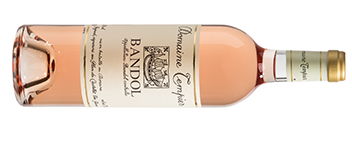 This rosé from Tempier holds a perfect balance between complexity and freshness. The quality of the work in the vineyard and the diversity of the terroir give it a good aromatic intensity, far from synthetic flavours. It consists of 50 % Mourvèdre, complemented by Grenache and Cinsault. The average age of the vines is 20 years. Vinification involves skin maceration, direct pressing and cold settling. Fermentation takes place in stainless steel or concrete vats. The wine is aged for 6 to 8 months before bottling. It can be kept from 1 to 5 years, but can be kept longer to develop notes of candied citrus, melon and rose petals.
This rosé from Tempier holds a perfect balance between complexity and freshness. The quality of the work in the vineyard and the diversity of the terroir give it a good aromatic intensity, far from synthetic flavours. It consists of 50 % Mourvèdre, complemented by Grenache and Cinsault. The average age of the vines is 20 years. Vinification involves skin maceration, direct pressing and cold settling. Fermentation takes place in stainless steel or concrete vats. The wine is aged for 6 to 8 months before bottling. It can be kept from 1 to 5 years, but can be kept longer to develop notes of candied citrus, melon and rose petals.
-
Bandol Blanc :
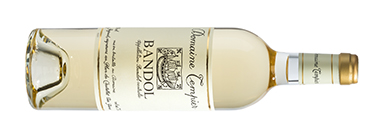 Despite its southern terroir, it retains a nice freshness, thanks to parcels located in the cooler, later areas of the vineyard, such as La Laidière, le Migoua and Petit Moulin. The relatively long ageing time in foudres gives it great complexity. It is made up of 60 % of Clairette, 30 % ofUgni blanc, Rolle and Rolle completes Bouboulenc and Marsanne. Vinification takes place in vats and tuns. The wine is aged for 10 months before bottling. It can be kept from 1 to 5 years, and can be kept much longer, evolving towards more honeyed and marine aromas.
Despite its southern terroir, it retains a nice freshness, thanks to parcels located in the cooler, later areas of the vineyard, such as La Laidière, le Migoua and Petit Moulin. The relatively long ageing time in foudres gives it great complexity. It is made up of 60 % of Clairette, 30 % ofUgni blanc, Rolle and Rolle completes Bouboulenc and Marsanne. Vinification takes place in vats and tuns. The wine is aged for 10 months before bottling. It can be kept from 1 to 5 years, and can be kept much longer, evolving towards more honeyed and marine aromas.
-
Cuvée la Tourtine Rouge :
 This parcel-based cuvée is made from a selection of 5.5 hectares of terroir on a hilltop near the Village du Castelletwhere vines are exposed to both sun and wind. The composition is 85 % of Mourvèdre complemented by Grenache and Cinsault. The average age of the vines is 45 to 50 years. The grapes are sorted in the vineyard and cellar, de-stemmed, crushed and put in the cellar for 3 to 4 weeks of fermentation using indigenous yeasts. The wine is aged in tuns for a minimum of 18 months before bottling. They can be kept from 5 to 20 years, depending on individual tastes, and even a little longer.
This parcel-based cuvée is made from a selection of 5.5 hectares of terroir on a hilltop near the Village du Castelletwhere vines are exposed to both sun and wind. The composition is 85 % of Mourvèdre complemented by Grenache and Cinsault. The average age of the vines is 45 to 50 years. The grapes are sorted in the vineyard and cellar, de-stemmed, crushed and put in the cellar for 3 to 4 weeks of fermentation using indigenous yeasts. The wine is aged in tuns for a minimum of 18 months before bottling. They can be kept from 5 to 20 years, depending on individual tastes, and even a little longer.
-
Cuvée Cabassaou Red :
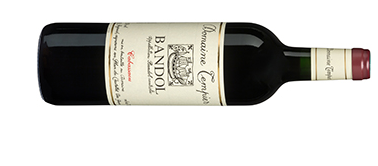
A parcel-based cuvée of definition (ca cabasse=ca tap) comes from a terroir of small terraces at the foot of the Tourtinesheltered from the Mistral. The vines benefit from a very warm climate, sheltered from the Mistral wind. They produce a dense, tight wine, typical of the Mourvèdrewith exceptional ageing potential. It is composed of 92 to 94 % of Mouvèdrecomplemented by Syrah and a little Cinsault. The average age of the vines is at least 60 years. Visit Vinification is carried out using grapes sorted at the plot and cellar level, de-stemmed, crushed and put into the cellar for 3 to 4 weeks of fermentation using indigenous yeasts. The wine is aged in tuns for a minimum of 18 months before bottling. The wine can be kept for 10 years or more, to allow it to develop its full potential.
-
Cuvée La Migoua :
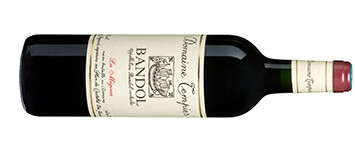 This cuvée comes from a high-altitude terroir on the Massif du Beausset-Vieuxas geologically complex as it is wild. A good selection allows us to better express our specificities. This wine gives an intense taste that Francois Peyraud Lulu and Lucien's son assumes that he "does the ball " when he lines his mouth before lying back in his coolness. It consists of 55 % of Mouvèdre25 % of Cinsault15 % of Grenache and Syrah. The grapes are sorted in the vineyard and cellar, de-stemmed, crushed and put into the cellar for 3 to 4 weeks of fermentation using indigenous yeasts. The wine is aged in tuns for 18 months before bottling. Shelf life ranges from 5 to 20 years, with greater ageing potential depending on individual tastes.
This cuvée comes from a high-altitude terroir on the Massif du Beausset-Vieuxas geologically complex as it is wild. A good selection allows us to better express our specificities. This wine gives an intense taste that Francois Peyraud Lulu and Lucien's son assumes that he "does the ball " when he lines his mouth before lying back in his coolness. It consists of 55 % of Mouvèdre25 % of Cinsault15 % of Grenache and Syrah. The grapes are sorted in the vineyard and cellar, de-stemmed, crushed and put into the cellar for 3 to 4 weeks of fermentation using indigenous yeasts. The wine is aged in tuns for 18 months before bottling. Shelf life ranges from 5 to 20 years, with greater ageing potential depending on individual tastes.

